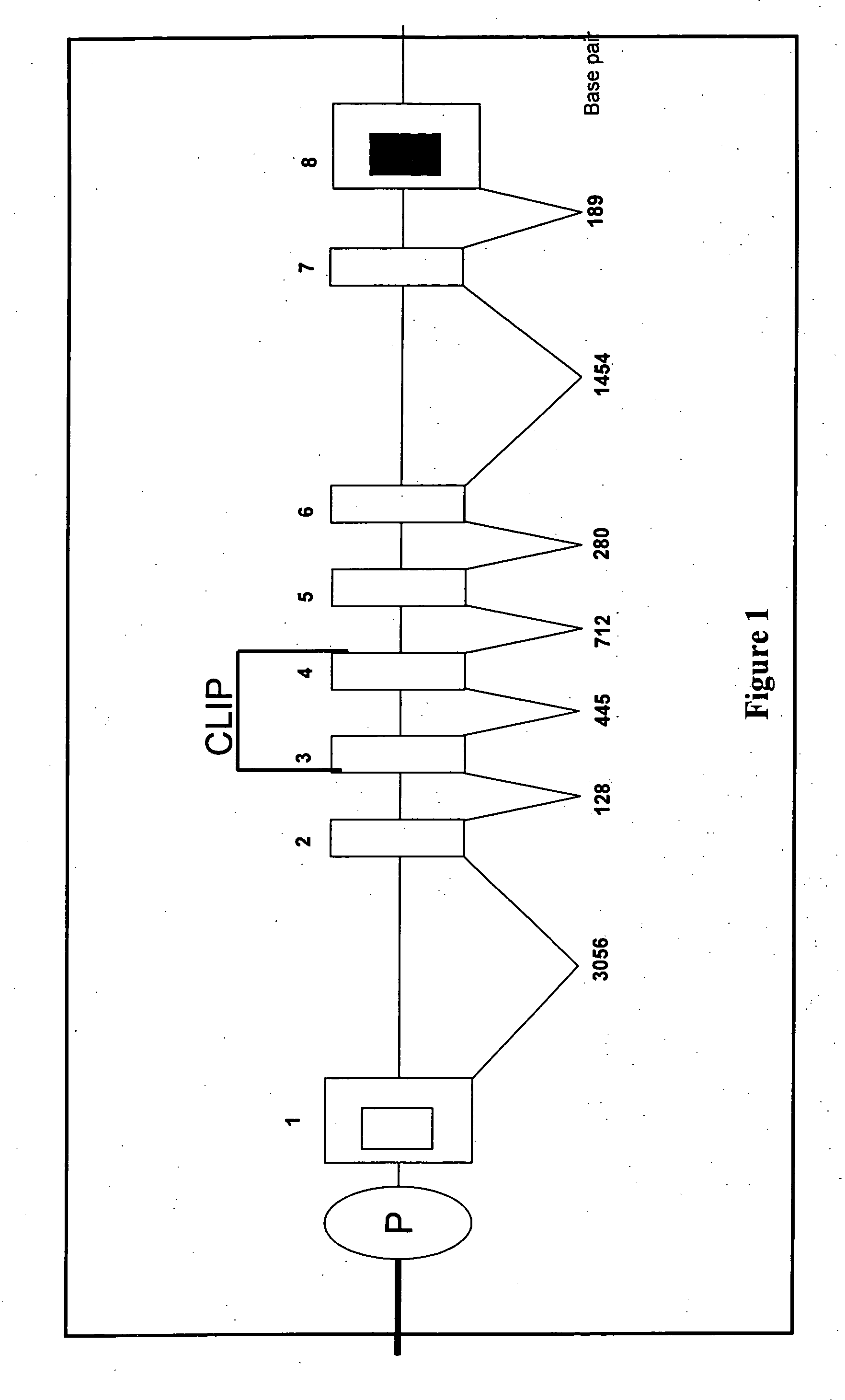Porcine invariant chain protein, full length cDNA, genomic organization, and regulatory region
- Summary
- Abstract
- Description
- Claims
- Application Information
AI Technical Summary
Benefits of technology
Problems solved by technology
Method used
Image
Examples
examples
I. Cells and Tissues.
[0168] Porcine fetal tissues, including aorta, brain, and liver, were obtained from a local slaughterhouse. Samples to be used later for isolation of DNA or RNA were flash frozen in liquid nitrogen, whereas aortic tissue was treated with collagenase in phosphate-buffered saline and pig aortic endothelial cells (PAEC) were isolated. PAEC were maintained in Dulbecco's modified Eagle medium (DMEM, Gibco, Grand Island, N.Y.), 10,000 U of heparin sodium (Elkinns-Sinn, Inc., Cherry Hill, N.J.), 15 mg endothelium growth supplement (Collaborative Biomedical Products, Inc., Bedford, MA), L-glutamine, and penicillin-streptomycin. Culture flasks were kept loosely capped in a 37° C. incubator with an atmosphere of 5% CO2.
II. Isolation of Nucleic Acids.
[0169] To isolate porcine genomic DNA, PAEC were grown to confluence in tissue culture flasks, trypsinized briefly at 37° C., and pelleted by centrifugation. High molecular weight porcine DNA was recovered using a standar...
PUM
| Property | Measurement | Unit |
|---|---|---|
| Fraction | aaaaa | aaaaa |
| Fraction | aaaaa | aaaaa |
| Length | aaaaa | aaaaa |
Abstract
Description
Claims
Application Information
 Login to View More
Login to View More - R&D
- Intellectual Property
- Life Sciences
- Materials
- Tech Scout
- Unparalleled Data Quality
- Higher Quality Content
- 60% Fewer Hallucinations
Browse by: Latest US Patents, China's latest patents, Technical Efficacy Thesaurus, Application Domain, Technology Topic, Popular Technical Reports.
© 2025 PatSnap. All rights reserved.Legal|Privacy policy|Modern Slavery Act Transparency Statement|Sitemap|About US| Contact US: help@patsnap.com



